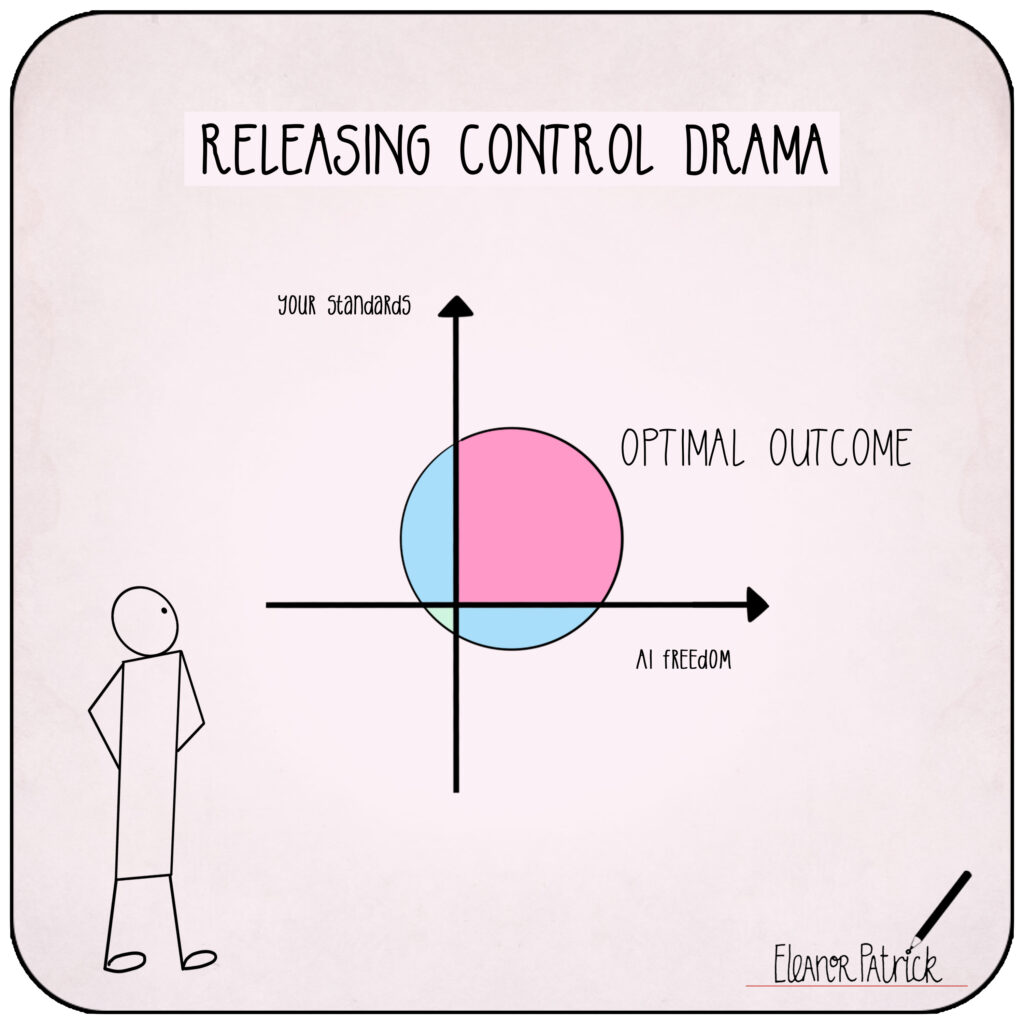
Day 14 — Releasing Control Drama
The Core Concept
Many professionals get caught in “control drama” with AI – either trying to micromanage every detail of AI output or worrying that using AI means losing control over their work quality.
This creates tension and reduces effectiveness.
The key is distinguishing between control (managing outcomes and quality) and micromanagement (controlling every step of the process).
You can maintain high standards while giving AI room to contribute its capabilities.
The Metaphor: The Orchestra Conductor
A skilled conductor doesn’t try to play every instrument. They guide the overall performance while trusting each musician to contribute their expertise.
The conductor sets the tempo, cues the sections, and shapes the interpretation, but allows the musicians to handle the technical execution of their parts.
When working with AI, you’re the conductor – setting direction, maintaining quality standards, and shaping the final output – while allowing AI to handle the technical execution within your guidance.
The Professional Story
Kevin was a marketing director who tried to control every word when using AI for content creation.
He’d spend more time editing AI drafts than it would have taken to write from scratch. He’d rewrite entire paragraphs that were perfectly good because they weren’t exactly how he would have phrased them.
He was conducting by trying to play every instrument himself.
He had to learn to conduct rather than micromanage.
He started giving AI clear direction about tone, audience, and key messages, then focused his editing on strategic alignment rather than stylistic preferences.
He’d adjust content that missed the mark strategically but leave well-written paragraphs alone even if they weren’t his exact style.
His content production speed increased dramatically while maintaining quality standards.
He realized that control meant ensuring the right outcomes, not controlling every step of the process.
Try This Today
1. Identify Your Control Pattern: Notice whether you tend to micromanage AI outputs (editing everything) or under-manage them (accepting everything). Find examples of each tendency.
2. Define Your Quality Standards: For one type of work you do with AI, write down 3-4 specific criteria that matter for quality. Focus on outcomes, not process preferences.
3. Practice Strategic Editing: When reviewing AI output today, only edit things that fail to meet your quality standards, not things that are simply different from how you would have done them. Notice the difference.
Daily Integration Phrase:
“I conduct the performance; I don’t play every instrument.”
 ContentFirst Marketing
ContentFirst Marketing